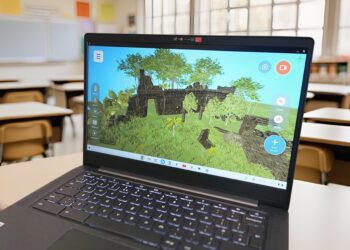The shift to student-centered instruction is well worth the effort.
Student-centered instruction and learning lead to greater rates of achievement and transferrable life skills for success in school and long after. The goal is to move beyond passive learning and help students become actively engaged through increased agency, hands-on and group experiences, and high—but completely realistic—expectations.
Benefits of Student-Centered Learning
Actively processing new material through thinking, discussing, investigating, and creating helps encode new information in student memories, forming the basis for deeper learning. Information, concepts, and skills are embedded by connecting prior learning, organizing knowledge, and creating. This also results in strengthened neural pathways which aid in future recall.
To facilitate these active processes, it’s important to step back from directing and let students take the lead. Encourage student agency through guided lessons. The bulk of the work lies in the planning stage rather than through lectures and student direction. Think ready-to-use activities and Studio Boards where students can investigate and collaborate to chase after information and demonstrate learning in creative ways. Teachers become facilitators and guides as students take ownership of their learning.
Lessons from the Science Community
We can draw from the science community when constructing lessons for student efficacy. The goal of the scientific community is to explain the world around us. And the scientific method relies on the precepts of description, prediction, explanation, and control. As students learn to take control of their learning, lessons can employ an inductive approach drawing on discovery rather than rote memorization.
Student Sensemaking
The scientific concept of sensemaking is one method worth exploring. Student sensemaking is simply deciphering how things happen and how the world works. The teacher’s job is to spark curiosity and guide students to figure things out for themselves.
As an example, a 6th grade math class is tasked with how to find the areas of parallelograms and triangles. In a teacher-centered classroom, the teacher lectures about the concepts and directs students on how to solve the equations.
In a student-centered classroom, teachers introduce an engaging activity that sparks the students’ curiosity leading them to ask questions, investigate, hold discussions, and eventually apply their knowledge. Student questions guide instruction and students are deeply involved in the learning process as they make connections across concepts.
Start shifting to student-led learning with our ready-to-use instructional activities!
Examples in Scientific Discourse
Students need time to make sense of the material at hand during the learning process. Rich and productive small and whole group discussions help solidify concept attainment and encourage them to think critically and creatively.
The first step is to define classroom norms for successful discourse—respect for others, participation by all, and the need to work toward a common goal are essential.
Productive discussions work best at specific stages of inquiry:
- Eliciting initial questions and explanations when encountering new information.
- Gathering and analyzing data and information. Guide students to accumulate data and then teach them to sift through the most relevant material.
- Refining models and explanations. At this point, constructive arguments are based on evidence, which enriches students’ understanding of the concepts.
It takes time to build the skills necessary for productive student-centered discourse, but eventually, students feel confident enough to conduct their discussions without your help—which is amazing to witness!
Student-Centered Approaches Can Be Life-Changing
We all use some iteration of the scientific method daily. Trial and error inform our daily efforts, from cooking dinner to creating a budget. However, excelling in our careers requires a skill base and attention to detail that transcends our everyday experience.
Allowing students to take ownership of their learning and discover and practice life-changing methods like sensemaking and productive scientific discourse helps prepare them for success in school and careers. Companies today expect their staff to think critically, have productive discussions, investigate thoroughly, create new systems, and solve problems. And we can help our students get there.
Watch Your Students Bloom
Shifting to a student-centered classroom increases student achievement and introduces fresh, newfound energy to classroom interactions. Engaging students with the help of student sensemaking strategies and examples from scientific discourse only add to the efficacy of your efforts. There’s nothing better than watching your students bloom into self-directed, capable individuals ready to take on the world!
About the Author
Rose Lattanze is an educational consultant and writer helping educators blend technology with instructional growth. She trained in Dr. Robert Marzano’s research-based instructional strategies, serving schools and districts as they transformed from teacher-based to student-based instruction. Currently, she writes about all things education for various EdTech companies. Read more >






